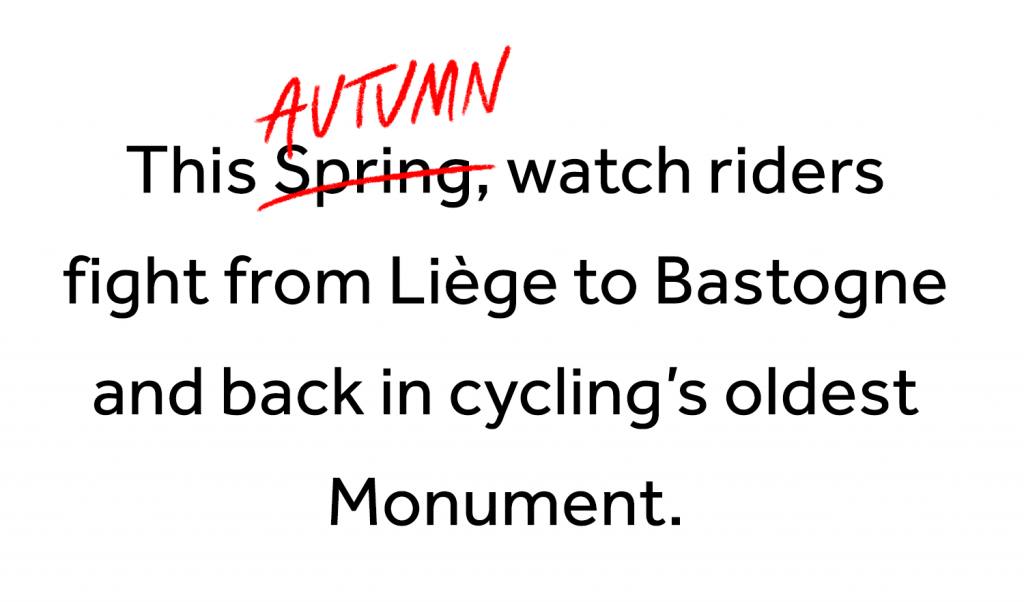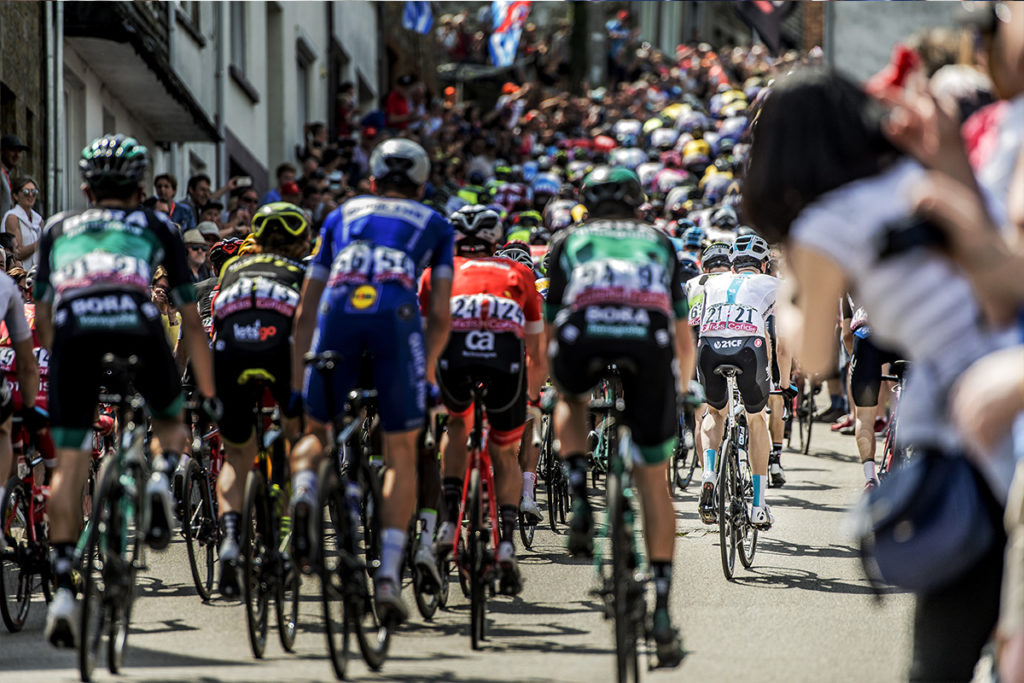As the oldest of cycling’s Five Monuments and one of the toughest single-day races in the sport, Liège-Bastogne-Liège has played host to many big moments over the years, from harrowing, snow-covered breakaways to countless close sprints to the finish. But one thing this classic contest has never featured is an autumn start—until now. Moving from late-April to October, La Doyenne, or “The Old Lady” as it’s also known, may be losing its place as the last Spring Classic of the year, but it is sure to retain all of its regular excitement as riders line up for an epic out-and-back across the hilly Belgian countryside.
First held in 1892, Liège-Bastogne Liège has experienced a few interruptions over the years, the majority occurring during both World Wars, as well as minor course changes, the most recent being last year’s return of the finish to the city centre in Liège. But overall, for over a century, the spirit of the race has stayed the same: cyclists must ride from Liège to Bastogne and back, taking in some 257 km and 5,000 vertical meters of climbing along the way. First one back wins. Yet with steep gradients and eleven categorized climbs standing in the way, the concept may be simple, but its execution is anything but.

Adding to the challenge is the notorious Belgian weather which typically shows up with rain, wind and sometimes snow each spring—and already looks poised to do the same this year, despite La Doyenne’s change in start date. With a field full of talent and a comparatively flat finish, look for early escapes and close competition as riders aim to claim glory this spring (autumn) in the hills of the Ardennes.
The 105th episode of Liege-Bastogne-Liege unfolds on Sunday 28th April with 256km and 11 sharp climbs awaiting. ‘La Doyenne’ is the last of the Ardennes Classics, the fourth of the season’s five Monuments and the oldest, first taking place in 1892. This year sees the finish return to the centre of Liege after 27 years in the suburb of Ans. Before then, the race begins with a relatively flat opening effort to the Cote de La Roche-en-Ardenne. After around 121km, the riders ‘enjoy’ a taste of what’s to come with the Cote de Saint-Roch, which measures 1km at 11.2%. But it’s with 100km to go that real pain grips. Within 12km the riders face Cote de Wanne (2.7km at 7.4%), Cote de Stockeu (1km at 12.5%) and Cote de Haute-Levee (3.1km at 7.9%). There’s little time for a breather before, with 50km to go, the Col du Rosier, which is the longest climb of the day – 4.4km at 5.9%. This year the brutal Cote de Saint-Nicolas has been removed from the finale, making the still debilitating Cote de la Roche-aux-Faucons (1.3km at 11%) the last climb. This is one for the strongmen who can produce a string of powerful, punchy efforts but retain enough in the tank for a final sprint. That profile fits Philippe Gilbert perfectly. The Belgian’s won here before and, after recently winning his fifth Monument in Roubaix , can he make it number six in Liege? Movistar Team is led by Alejandro Valverde, who’s looking for a record-equalling fifth victory in Liege. The King of the Ardennes last won here in 2017 when the 39-year-old outsprinted Dan Martin ascending the Cote de Saint-Nicolas. On that memorable April day, Team Sky’s Michal Kwiatkowski finished third. The 28-year-old Pole returns this year looking to go two better. With third at this year’s Milan-San Remo and third overall at Paris-Nice, the form is there. Romain Bardet is the man leading AG2R La Mondiale’s Ardennes charge. The 28-year-old’s always called Liege his favourite one-day race and so it proved in 2018 with his first-ever Monument podium (third). 2019 could be the year he becomes the first Frenchman to win this race since Bernard Hinault in 1980?









